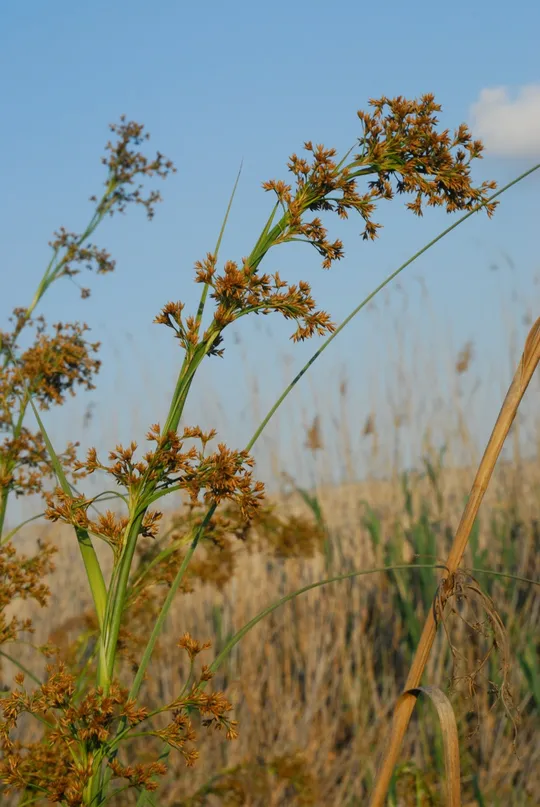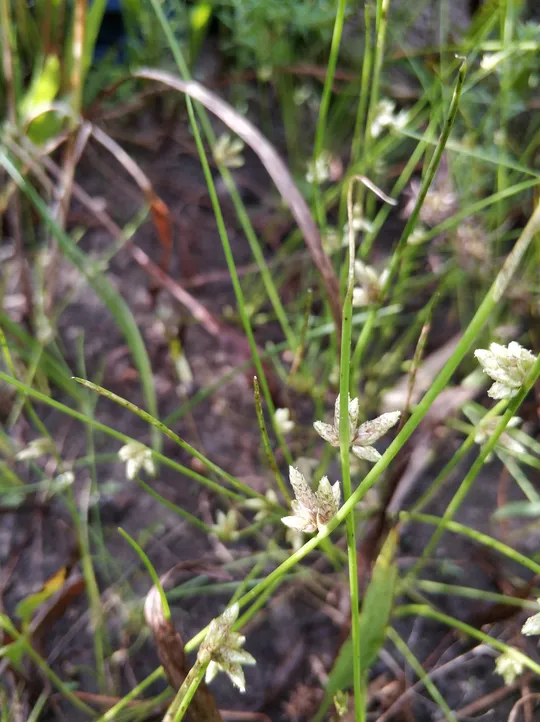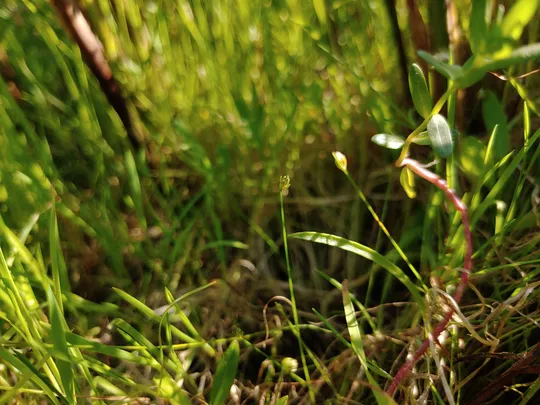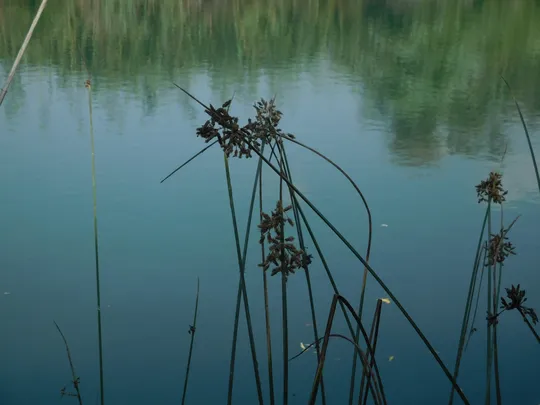Cut Sedge, Saw Sedge
Cladium mariscus

Cladium mariscus was once used for thatching roofs in the British
Isles.
Cladium mariscus is found in seven
regions that include 13 sites, although there are in fact an estimated 15 sites.
In the Acre Valley it is found only in En Namfit. On the Carmel Coast it grows
on three sites in the Dalia Stream–Taninim Stream section; it has disappeared
from the Dor area. In the Sharon it is extinct from Binyamina, Heftsiba and
Poleg, but was found at the Yarkon sources. In the Hula Valley C. mariscus is now found only in the Sahlavim Reserve
behind Hurshat Tal and from the hilly Jordan. The species has disappeared from
the mouth of the Jordan River where it flows into the Hula Valley and from
Gonen where it was collected in the 1920s-'50s. In the Upper Jordan Valley C. mariscus is known from Bet
She’an-Tirat Zvi-En Hoga and in the Jezreel Valley from the Kibbutzim Stream.
In the Dead Sea region, it was found only at Enot Tsukim (En Fashha).
Marshes, stream banks,
stagnant or slowly flowing water.
The genus Cladium
comprises two species. Cladium
mariscus has a cosmopolitan distribution. The second species, C. californicum,
is limited to North America. There are those that include additional species in
the genus.
•
The number of
regions in Israel where Cladium mariscus appears has
remained stable, but there is some decline in the number of sites, especially
in the Sharon, where some of the populations that were previously known are now
extinct.
•
C. mariscus
grows in clumps of reed clusters. At some sites, only a few clumps are found,
and at others, such as in the Dalia Stream estuary, there are large populations
estimated at 1000 plants in an area of 10
hectares. There are no records of change trends over time in the numbers of
clusters or the space that they occupy.
•
The main factors
threatening C. mariscus populations is
damage to wetlands from pollution or drying up.
•
C. mariscus
is protected in the En Namfit Reserve, in the Sahlavim Reserve in Hurshat Tal
and in Enot Tsukim.
•
Its global distribution
and status according to IUCN categories is LC = Least Concern, i.e. it is not
considered an endangered species. Nevertheless, it is included in the Cyprus
red list as a VU = Vulnerable species. According to the IUCN it is also
endangered in Finland and vulnerable in Norway.
All Cladium mariscus populations should
be monitored over the long term on an annual basis and demographic population trends
should be recorded. It is important to prevent drying and pollution of the
wetlands where C. mariscus grows. The Dalia Stream
estuary should be officially declared a nature reserve.
Cladium mariscus has a sub-cosmopolitan
global distribution that includes all European countries, the southeastern
United States, Mexico and Central America. It was also reported from several African
countries and from Australia. In the Mediterranean countries, C. mariscus is found in all the
countries surrounding the sea and in its vicinity: Portugal, Spain, France,
Italy, former Yugoslavia, Albania, Greece, Bulgaria, Syria, Lebanon, Israel,
Egypt, Libya, Tunis, Algeria and Morocco. In the Mediterranean islands, it is
found in Corsica, Sardinia, Sicily and Crete.
Cladium mariscus is a tall
perennial grass belonging to the Cyperaceae family that grows in marshes and flowing water bodies. The species is
rare in Israel and the number of its sites is on a declining trend. C.
mariscus grows in aquatic habitats, which are extremely vulnerable to
drying and pollution in Israel. Due to the extreme sensitivity of its habitat
and the rarity of the species the red book expert committee gave it a value of
3.2, although the total values of its criteria is below the threshold of the
red list.
Current Occupancy Map
| 1000 squre meter pixel | 5000 squre meter pixel | 10000 squre meter pixel | |
|---|---|---|---|
| number of observations | 0 | 0 | 0 |
| in total pixels | 0 | 0 | 0 |
| Family | Cyperaceae |
| Classification | On the near threatened species list |
| Ecosystem | Mediterranean |
| Chorotype | Cosmopolitan |
| Conservation Site | Sahlavim Reserve – Hurshat Tal, Dalia Stream Estuary Reserve |
| Rarity |
1
2
6
|
|---|---|
| Vulnerability |
0
3
4
|
| Attractiveness |
0
0
4
|
| Endemism |
0
0
4
|
| Red number |
1
2.6
10
|
| Peripherality | 0 |
| IUCN category | DD EW EX LC CR EN VU NT |
| Threat Definition according to the red book | Near threatened |
 Based on:
Based on:






